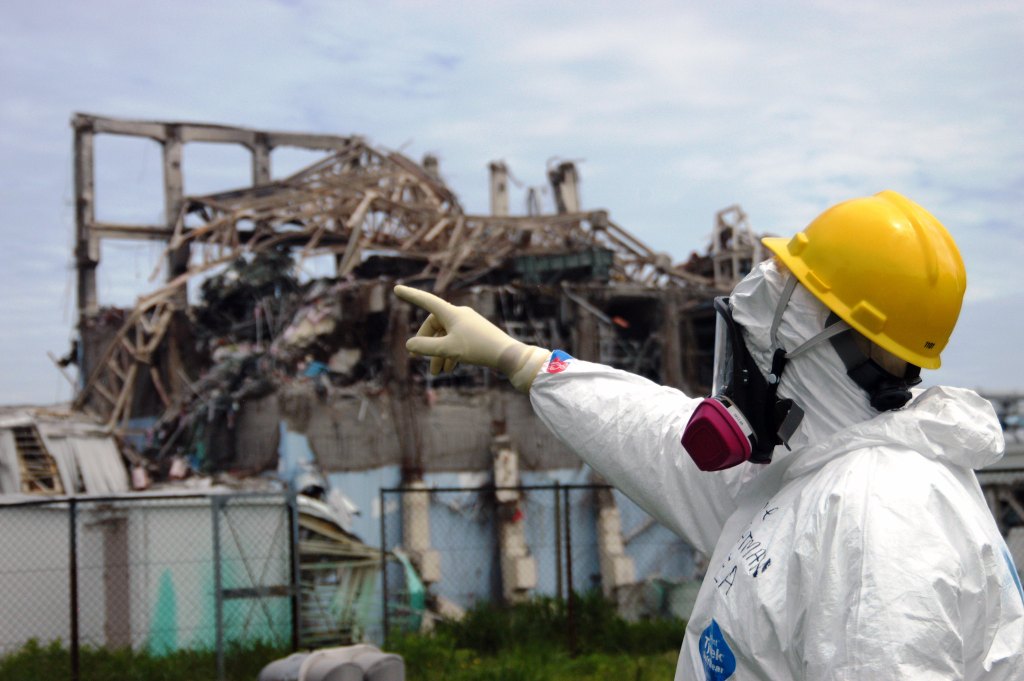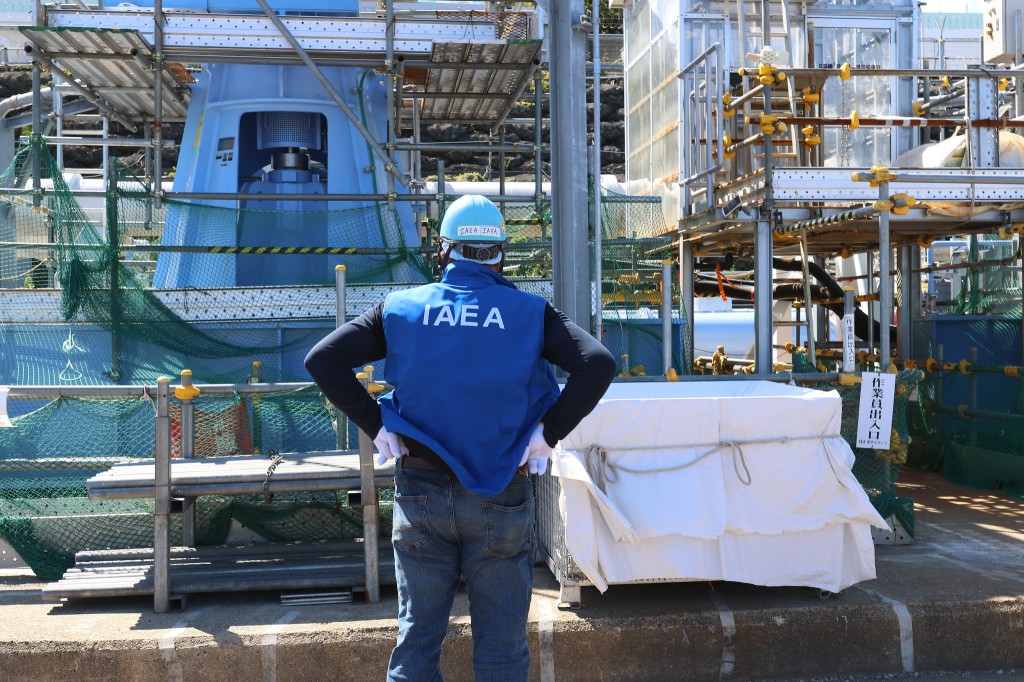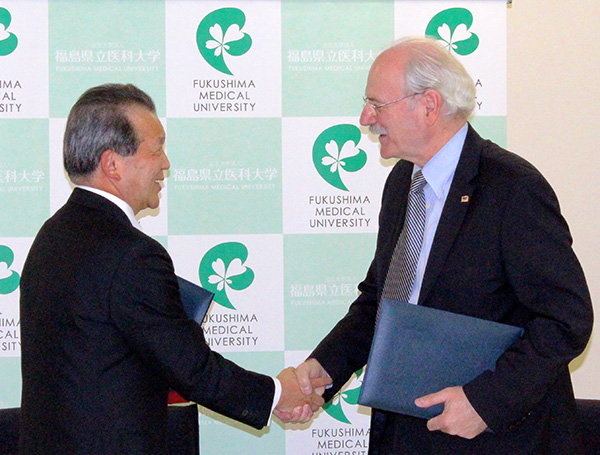Agencies that promote nuclear power are quietly managing its disaster narrative
By Kolin Kobayashi
This year marks the 13th year since the Fukushima accident began, yet the path to a conclusion is by no means clear. The declaration of a state of emergency still cannot be lifted because of the various dangers and difficulties that have arisen. Despite this, Prime Minister Kishida’s government is doing more than ever to promote nuclear power as a basic energy source. This approach is similar to that of the French administration, which is also trying to promote nuclear energy as a dual-use nuclear weapon.
The international nuclear lobby, which represents only a minority, has the influence and money to dominate the world’s population with immense power and has now united the world’s minority nuclear community into one big galaxy. Many of the citizens who have experienced the world’s three most serious civil nuclear accidents have clearly realized that nuclear energy is too dangerous. These citizens are so divided and conflicted that they feel like a helpless minority.
The current situation with the Fukushima accident
Let’s start with the total amount of radiation that the Fukushima-Daiichi nuclear power plant still contains today. The spent fuel at the site contains 85 times more cesium-137 than Chornobyl and 50,000 to 100,000 times more than the Hiroshima bomb.
The fuel is still stored in pools on the top floor of the reactor buildings (30 metres above ground), with the exception of Unit 3, the removal of which was completed in 2019.

Now, although 12 years have passed, the precise program for future decommissioning is unclear. While the approximate overall radiation levels are known, the buildings and reactors themselves, where the decommissioning and dismantling work will take place, are highly radioactive and cannot be easily penetrated by workers.
The true extent of the accident is not known, nor is the exact state of dispersion of the corium (the molten magma from the nuclear fuel rods in the reactor core). In Unit 1, for example, it is clear from the images taken by a robot that many parts of the circular concrete foundation supporting the pressure vessel have been damaged by the high heat of the corium. There is a significant risk of collapse in the event of a strong earthquake, and if the 440-tonne vessel collapses, it could hit the storage pool next to it. If this pool is damaged, even partially, another major disaster could occur.
Release of contaminated water
The amount of contaminated water is increasing all the time, as water continues to flow to cool the corium. Currently, around 90 tonnes of contaminated water are being added to the tanks every day. There are currently more than 1,000 tanks, and TEPCO says they will be full by February next year.
TEPCO had promised not to release water without the consent of local communities and fishermen, but this promise was not kept. The International Atomic Energy Agency (IAEA) dispatched a team of experts to investigate whether the radioactivity levels of the contaminated water treated by TEPCO met the international safety standards set by the IAEA, and the final report was submitted to the government on July 4. On the basis of this report, the Japanese government decided to release the water and began discharging water into the Pacific Ocean on August 24, releasing 7,800 tons in 17 days.
However, the IAEA does not have the scientific authority to make reference to the ecological impact of this water discharge, nor has it carried out such a long-term assessment. It is more of a political decision than a scientific one.

TEPCO and the Japanese government have said that releasing contaminated water is essential for decommissioning work, but there are still places to build storage facilities. There are also methods other than releasing the water into the ocean, such as solidifying it in mortar and storing it on the surface.
However, the regulatory committee and study group said they had considered five solutions: geological injection, hydrogen release, underground burial, steam release and ocean release. In the end, they chose the cheapest method.
What is the international nuclear lobby?
Today, the nuclear issue is globally interwoven. The raw material needed — uranium — as well as nuclear technology and radiation protection standards, cannot be managed by a single country.
First of all, nuclear energy is the dark side of the atomic bomb. Nuclear reactors designed to produce electricity were originally machines designed to produce plutonium for the manufacture of atomic bombs. So it was only natural that French president, Emanuel Macron, should advocate the complementary nature of civil nuclear energy and nuclear weapons. “Without civilian nuclear energy there is no military use of this technology – and without military use there is no civilian nuclear energy,” Macron said during a visit to Framatome’s Le Creusot facility in December 2020.
The realpolitik of the atomic bomb led to the creation of the IAEA in 1957. The five nuclear-weapon states on the UN Security Council promoted nuclear energy for peace and encouraged its development in order to monopolize nuclear weapons, and they made the IAEA a nuclear supervisory agency to ensure that no other country produced atomic bombs. The UN Member States were deceived by Eisenhower’s fine-sounding words “Atoms for Peace” to the UN General Assembly on 8 December 1953.
The IAEA controls nuclear energy throughout the world. But this international organization is neither objective nor impartial, nor does it conform absolutely to scientific truth. It is a highly political institution.
Ordinary citizens trust international organizations simply because they hear about them in UN reports. But the IAEA is constantly working to promote nuclear energy. The effects of radiation are trivialized or denied, as if they were not a problem, merely a manageable danger for nuclear power plants.
The effects of radiation are grossly underestimated. The data base on which the IAEA relies is that of Hiroshima and Nagasaki, collected by the Atomic Bomb Casualty Commission. These data are totally incomplete. They do not take into account people who were exposed to radiation more than 2 km from the hypocenters, people who entered the cities after the bombs were dropped, and people who were exposed to radiation from black rain in distant areas. In other words, low-dose radiation exposure is completely ignored.
The French nuclear mullahs are at the heart of this international lobby. In particular, they are engaged in a communication strategy that consists of underestimating, trivializing or denying the effects of radiation, and insisting that it is possible to live with radiation in contaminated areas. In other words, a strategy of concealment.
The famous Ethos project, which ran in Belarus from 1996 to 2001, ten years after the Chornobyl accident, seemed to be helping the population, but in fact it was consolidating the theory of acceptance of radiation. Jacques Lochard, former director of the CEPN (Centre d’étude sur l’Evaluation de la protection dans le domaine Nucléaire) in France, who carried out this project, quickly showed up in Fukushima in November 2011 and implemented the same strategy in a different form.

Lochard is the perfect example of the constantly revolving door among individuals from organizations that promote nuclear power and those involved in radiation protection. These circumstances are totally unknown to ordinary citizens.
The CEPN is an association with only four members: the CEA (Commissariat à l’énergie atomique et aux énergies alternatives), EDF (Électricité de France), Areva/Orano and the IRSN (Institut de radioprotection et de sûreté nucléaire). In other words, it is the embodiment of the French nuclear lobby and manages the French nuclear lobby’s communication on radiation protection.
The Chornobyl Ethos project and the CORE and SAGE projects that followed it, were organized and carried out by Lochard, now retired but appointed as a visiting professor at the Institute of Atomic Bomb Disease at Nagasaki University, and his right-hand man, Thierry Schneider. They have become respectable points of reference for the European Commission as a means of dealing with a nuclear accident.
The methods initiated by this minority of promoters will be imposed, with authority and money, on those who are victims of a future serious nuclear accident in Europe. According to this philosophy, there is no need to evacuate. We can live happily with radiation, even in contaminated areas.
In this way, the French nuclear lobby, in cooperation with the International Commission on Radiological Protection, the IAEA-UNSCEAR (United Nations Scientific Committee on the Effects of Atomic Radiation) and others, can assure us that we can overcome a serious nuclear accident, by simply adapting to radiation exposure. The phrase “let’s hope people have the strength to bounce back” is repeated. The word “resilience” has become a key word in this milieu.
But in Belarus and Ukraine, 37years after the Chornobyl nuclear disaster, 60% to 80% of children are still ill from the radiation resulting from Chornobyl. In Fukushima too, there are those 300 or more cases of thyroid cancer. The Japanese authorities still insist that in the case of Fukushima, the causal relationship between cancer and radiation is not yet known. This is despite the fact that this was admitted in the case of Chornobyl. It can therefore be said that at Chornobyl, as at Fukushima, the reality of the effects of radiation caused by the accidents is still not officially recognized.
France has clearly stated that nuclear weapons and nuclear power are the two wheels of the car, and President Macron has insisted that a total of 15 nuclear power plants will be built by 2050. Japan has also declared that it will continue to develop nuclear power plants in collaboration with France.
However, it is clear from the outset that if we continue to develop nuclear power plants, nuclear waste will continue to accumulate. At present, the storage pools at every nuclear power plant site — whether in Japan or France — are approaching the limit of their full capacity. However, no reliable method for the final disposal of high-level nuclear waste has yet been established.
In this way, the lessons of Chornobyl and Fukushima are not being applied at all, but rather, the actual health hazards are being covered up. Any so-called cleanup projects are being carried out for the sake of immediate interests only. In the end, they are forcing the victims to endure radiation exposure and ultimately abandoning them. This is because of the cover-up strategy of the international nuclear lobby in the background.
Kolin Kobayashi is a Tokyo-born France-based anti-nuclear activist and retired freelance journalist. He is president of the non-profit organization, Echo-Echanges.
Headline photo: IAEA chief, Rafael Grossi, meets with Japanese prime minister, Fumio Kishida, in July 2023. Kishida is actively promoting nuclear power for Japan despite the Fukushima disaster. (Photo: IAEA Imagebank)
The opinions expressed in articles by outside contributors and published on the Beyond Nuclear International website, are their own, and do not necessarily reflect the views or positions of Beyond Nuclear. However, we try to offer a broad variety of viewpoints and perspectives as part of our mission “to educate and activate the public about the connections between nuclear power and nuclear weapons and the need to abandon both to safeguard our future”.
 Beyond Nuclear International
Beyond Nuclear International
Pingback: A Powerful minority makes the nuclear decisions, in a strategy of concealment | Nuclear Information
Pingback: Links 10/13/2023 | naked capitalism - News Digest Blog
Pingback: Links 10/13/2023 | naked capitalism - utahdigitalnews.com
Pingback: Links 10/13/2023 | naked capitalism - North Dakota Digital News
Pingback: Links 10/13/2023 | naked capitalism - Alaska Digital News
Pingback: Links 10/13/2023 | naked capitalism - Hawaii Digital News
Pingback: Hyperlinks 10/13/2023 | bare capitalism - The Owl Report
Pingback: Hyperlinks 10/13/2023 | bare capitalism – Naijastic.com
Pingback: Links 10/13/2023 | naked capitalism - Maine Digital News
Pingback: Links 10/13/2023 | naked capitalism - Global News Network
Pingback: Links 10/13/2023 | naked capitalism - westvirginiadigitalnews.com
Pingback: Links 10/13/2023 | naked capitalism - Wisconsin Digital News
Pingback: Links 10/13/2023 | naked capitalism - MMS KITA
Pingback: Links 10/13/2023 | naked capitalism - Finance Robin
Pingback: Links 10/13/2023 - AlltopCash.com
Pingback: Links 10/13/2023 | naked capitalism - Rodina News
Pingback: Links 10/13/2023 | naked capitalism - JanPost
Pingback: Links 10/13/2023 | naked capitalism – Jpnews
Pingback: Links 10/13/2023 | naked capitalism
Pingback: Links 10/13/2023 | naked capitalism - MEDIA PILOT
Pingback: M168: 7 – 11 October 2023 – MOMENTUM
Pingback: How Agencies That Promote Nuclear Power Are Quietly Managing Its Disaster Narrative - SHOAH
Pingback: How Agencies That Promote Nuclear Power Are Quietly Managing Its Disaster Narrative - CounterPunch.org
Pingback: A strategy of concealment via Beyond Nuclear International | The Atomic Age
Pingback: Nuclear news – week to 25 September « nuclear-news
Pingback: Nuclear news – week to 25 September « Antinuclear
Pingback: A Powerful minority makes the nuclear decisions, in a strategy of concealment — Der Friedensstifter
Pingback: A Powerful minority makes the nuclear decisions, in a strategy of concealment « Antinuclear
Pingback: A Powerful minority makes the nuclear decisions, in a strategy of concealment « nuclear-news